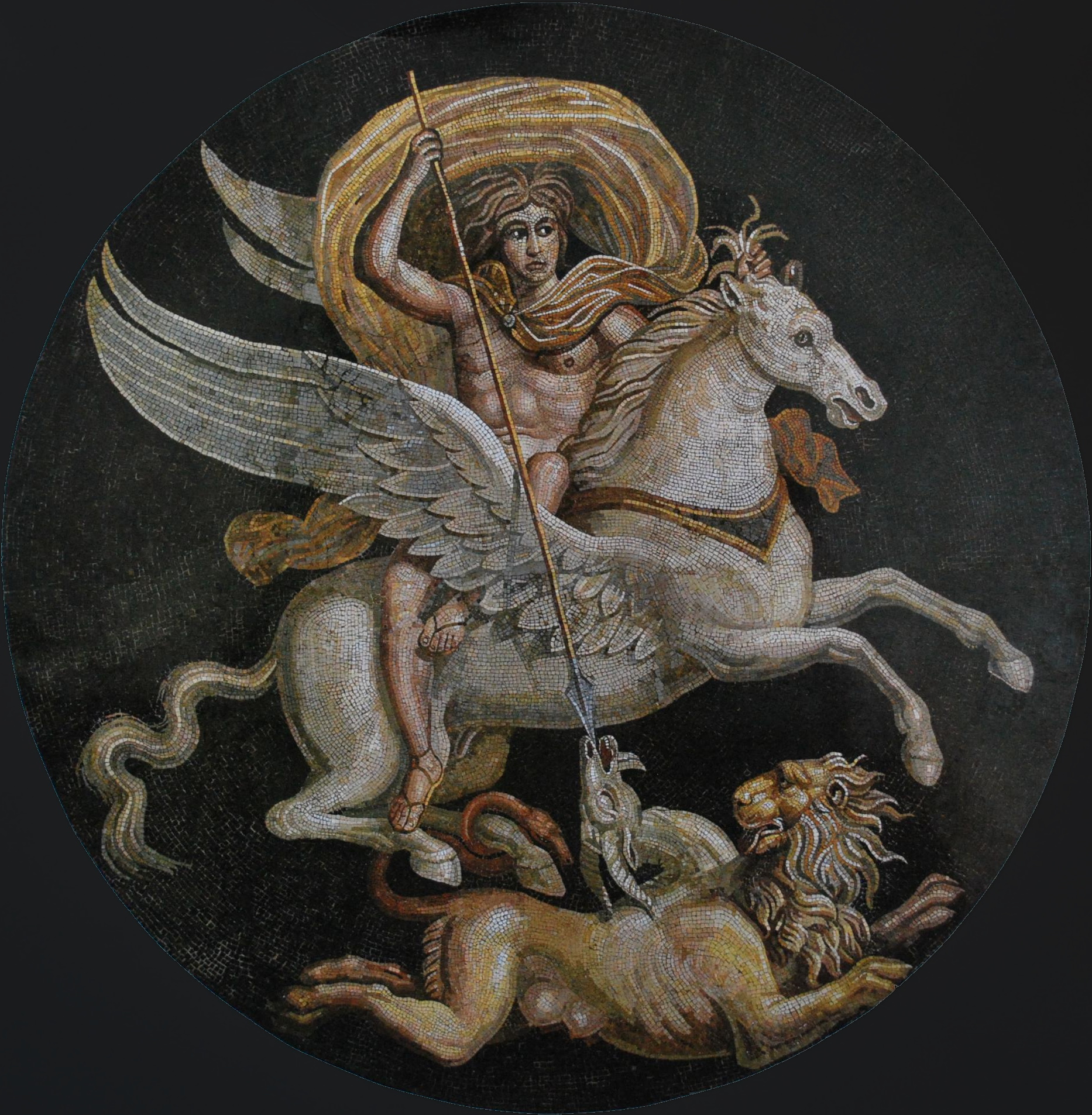Bellerophon riding Pegasus and killing the Chimera, Roman mosaic, the Rolin Museum in Autun, France, 2nd-3rd C. CE
"He [King Iobates of Lykia (Lycia)] ordered Bellerophon to slay the Khimaira (Chimera), assuming that he would instead be destroyed himself by the beast, since not even a quantity of men could subdue it with ease, let alone one. For it was a single being that had the force of three beasts, the front part of a lion, the tail of a drakon, and the third--middle--head was that of a goat, through which it breathed out fire. It despoiled the countryside and ravaged the herds. It was allegedly reared by Amisodaros (Amisodarus), as Homer also states, and according to Hesiod its parents were Typhon and Ekhidna (Echidna). Bellerophon mounted Pegasos (Pegasus), his winged horse born of Medousa (Medusa) and Poseidon, and flying high into the air brought down the Khimaira with his bow and arrows."
-Pseudo-Apollodorus, Bibliotheca 2. 31 - 32 (trans. Aldrich) (Greek mythographer 2nd C. CE)
Source:
Quote:



Comments
Post a Comment